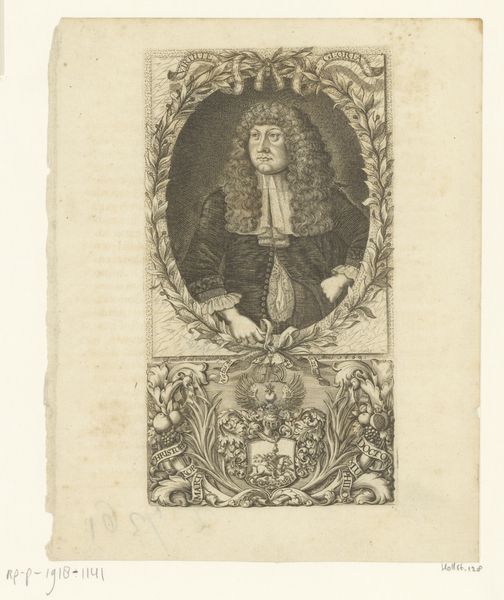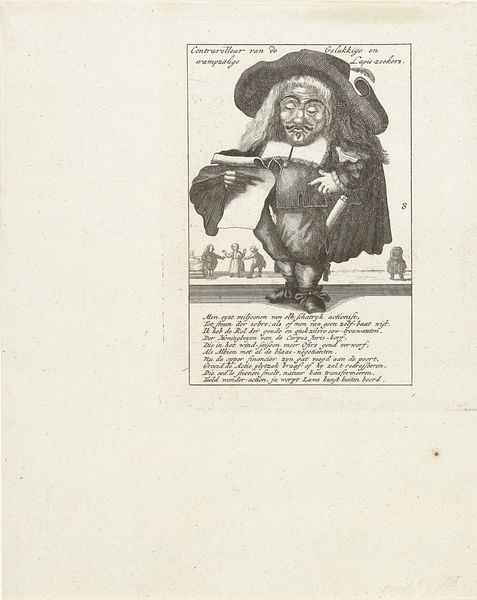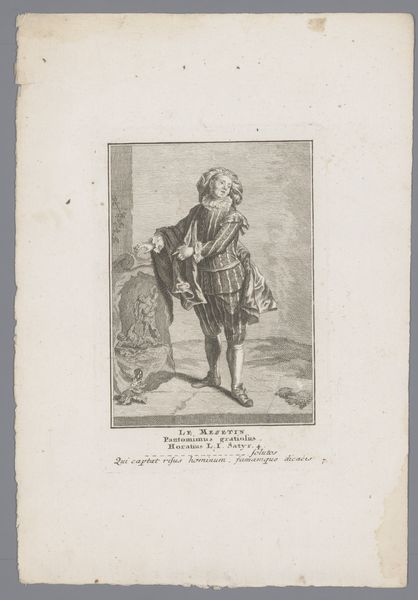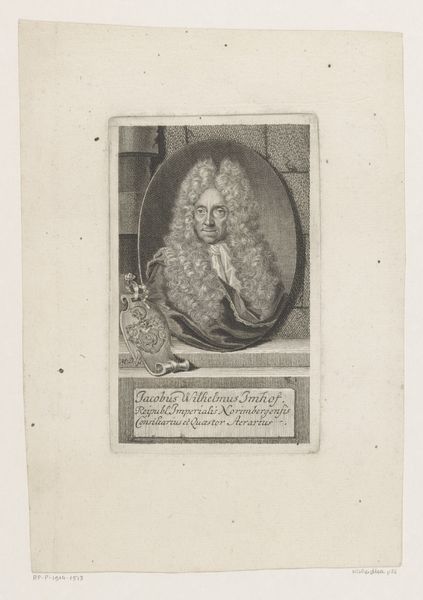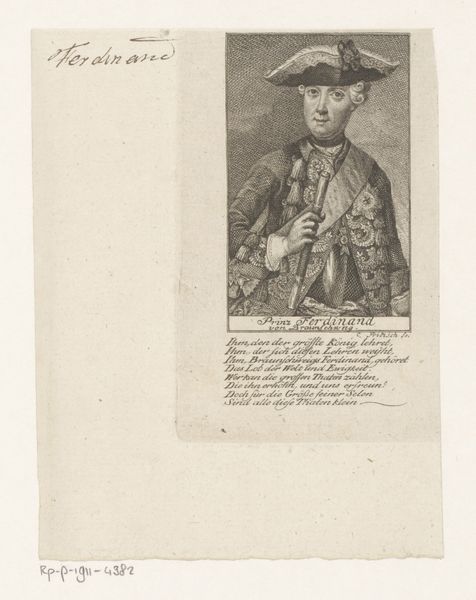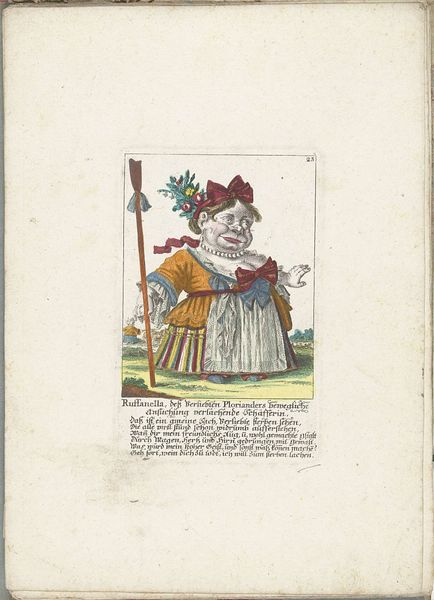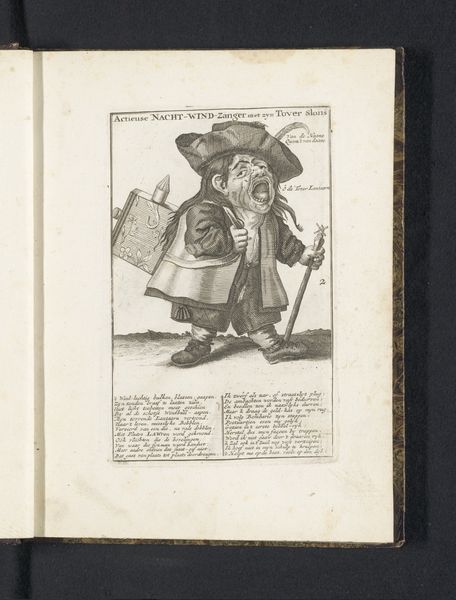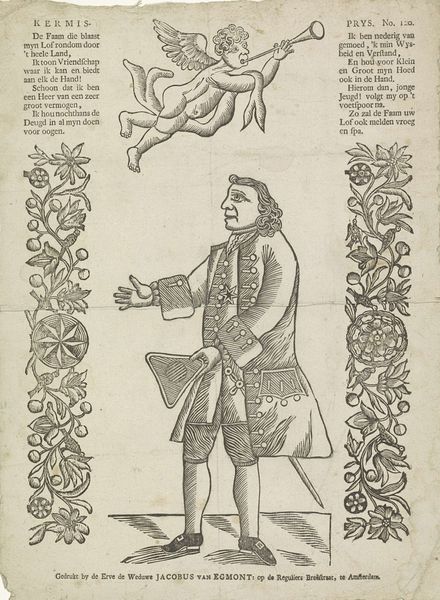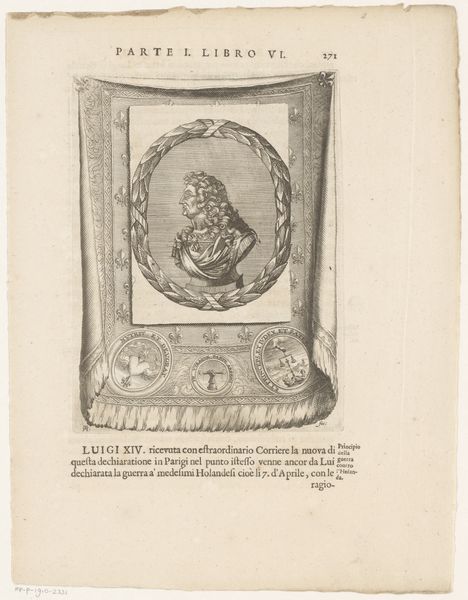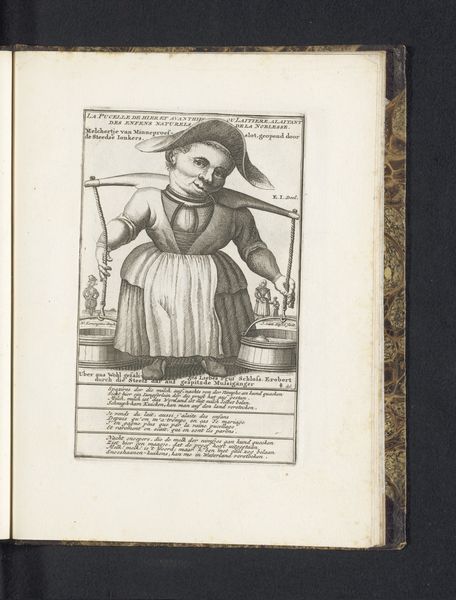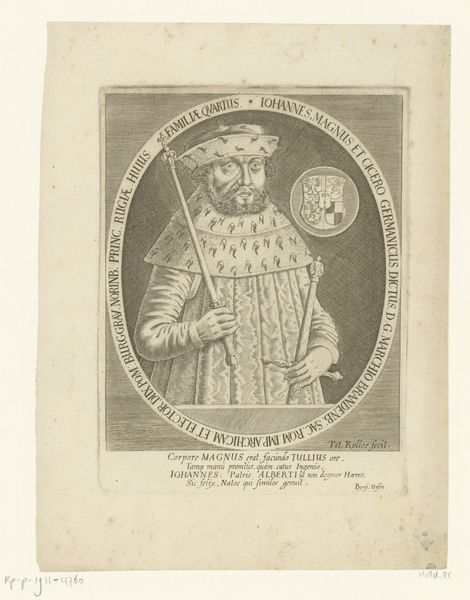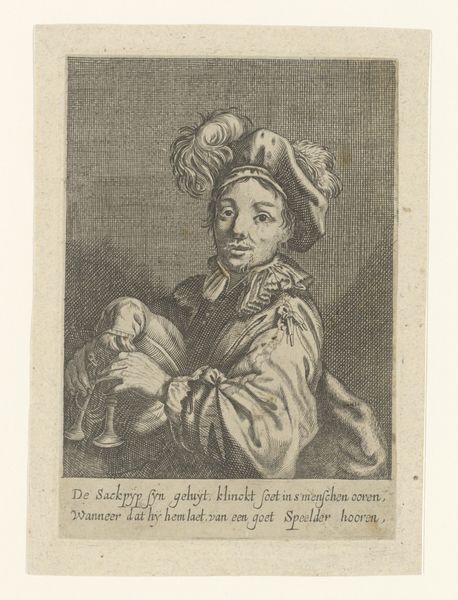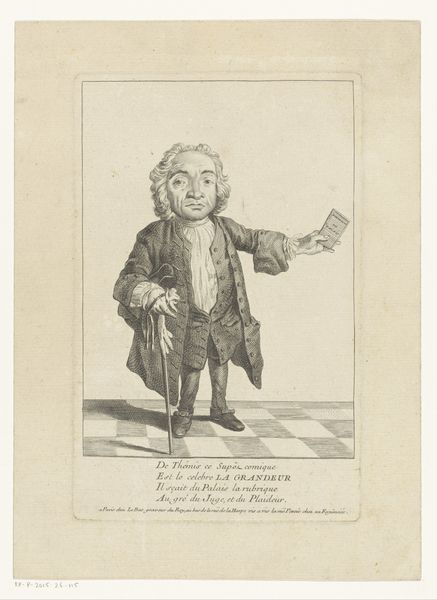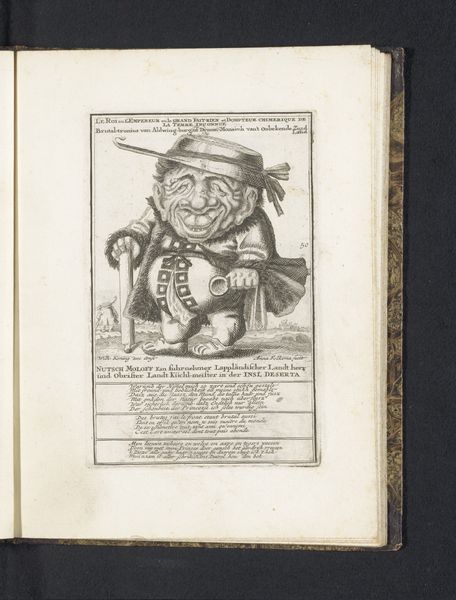
drawing, etching, ink, engraving
#
portrait
#
drawing
#
neoclacissism
#
etching
#
caricature
#
ink
#
engraving
Dimensions: height 151 mm, width 85 mm
Copyright: Rijks Museum: Open Domain
Editor: So, here we have "Portret van François Xavier de Burtin," dating back to around 1798. It's an etching and engraving, and the subject is… certainly distinctive. There's a strange blend of formality in the coat and wildness in the hair and facial features, creating a comical impression. What do you see in this piece, considering its historical moment? Curator: It’s fascinating how caricature became a powerful tool during the late 18th century, reflecting broader social and political shifts. This portrait, clearly intended as satire, gains significance when we consider the French Revolution's impact on societal structures and the critique of aristocratic privilege. Look at the inscribed text—a satirical coat of arms and commentary on Burtin's profession. What do you think this tells us about the role of art and image in public discourse at that time? Editor: Well, the fact that an artist could create and disseminate an image like this suggests a growing freedom of expression, and perhaps a decline in deference to established figures. Were these kinds of images widely circulated and influential? Curator: Absolutely. Engravings were relatively inexpensive and could reach a wide audience through prints and pamphlets. This form of visual commentary provided a space to challenge power and express dissenting opinions. Consider how the print itself functions almost like a proto-meme, disseminating a particular point of view about Burtin and, more broadly, perhaps commenting on societal trends of the time. Who controlled the narrative then, and who does now, and through what channels? These are useful lenses. Editor: So, it's not just a funny portrait. It's a commentary on social mobility, class, and the changing role of public image during a period of immense social upheaval. I didn’t consider it that way at first glance! Curator: Exactly! By examining its historical context, we can interpret this etching as a vital cultural artifact that participated in shaping public opinion. That makes it even more relevant today, in my view.
Comments
No comments
Be the first to comment and join the conversation on the ultimate creative platform.
